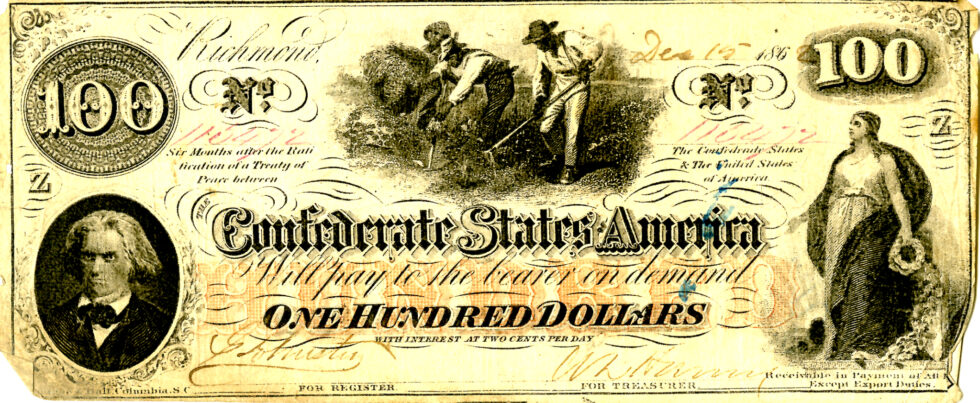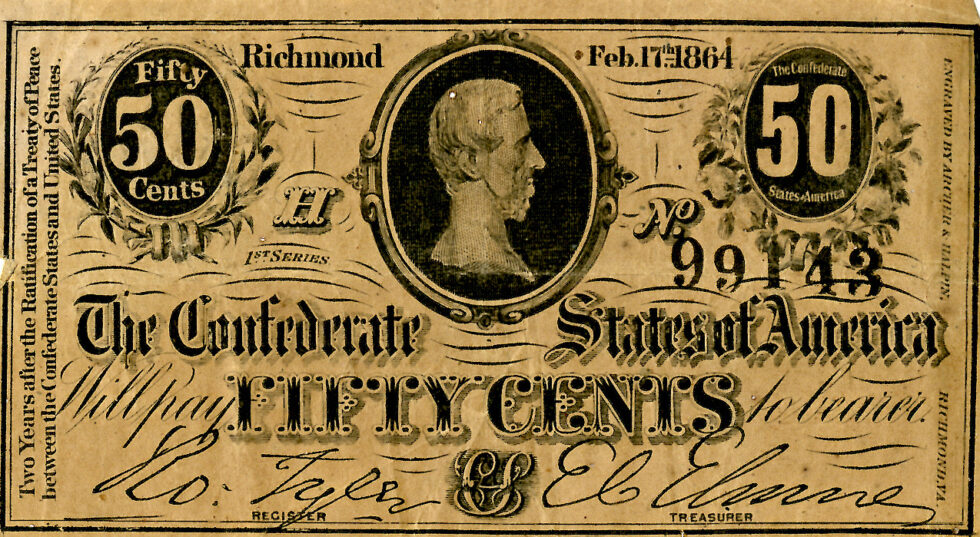Use of Imagery on Civil War Money
Currency can be a compelling and unique way to learn about the past. When used, the monetary value is often looked at first, but the imagery around it sends the biggest message. It is used as a tool to make a political and cultural statement about a nation’s identity, leadership, heritage and values.
By studying the imagery used on Confederate money, we can better our understanding of Civil War-era values and how they differed between the North and the South.

For example, Confederate currency depicted famous military leaders and scenes from life in the south, which often included painful images of slavery and hard labor. Conversely, the Union chose images depicting core principles of democracy such as liberty. These images were placed on special federal notes called greenbacks, which helped the Union pay for the cost of their Civil War efforts. This contrasting use of imagery highlights perhaps the biggest political differences between the North and South during the Civil War, each a loud and intentional message of what they represented.

Confederate Money & the Printing Process
Confederate leadership began printing its own form of paper money as early as July of 1861 and continued until April 1865. The amount of paper issued during this time is unknown. A majority of Confederate money was created through a technique called lithography where a master copper plate with the desired design was prepared and then transferred to a lithographic stone, after which printing could begin.
The printing process was mainly conducted in Columbia, South Carolina and then shipped to Richmond, Virginia. There they were cut, signed and numbered, and put into circulation. What is unique about this process is that most Confederate notes were signed and numbered by hand with the hope it would make counterfeiting more difficult. Northern engravers used counterfeiting to undermine the Confederate cause and make a profit of their own. By 1864, Confederate currency printers switched to printed signatures and stamped serial numbers.

After the War
When the Civil War ended, Confederate currency was worthless and had no value. As a whole, paper currency was unpopular and distrusted. To remedy this, the Federal government made several strides to create a more reputable and reliable form of currency. By 1896, American trust had increased, and they released the Educational Series, arguably the most beautiful monetary art designs ever produced by the United States.
Over the past two centuries, American currency has changed, but one thing remains the same: it invokes ideals of liberty, justice and the founding principles of unity and independence. A rather stark contrast, to the Confederacy.
The Treasure of the Month is located on the library’s historic second floor near the East Entrance. It can be viewed during regular library hours, 9:00 a.m. to 5:45 p.m. Monday through Saturday. For museum questions, call 409.763.8854 Ext. 125 or email museum@rosenberg-library.org. For press inquiries, contact the Communications Coordinator.